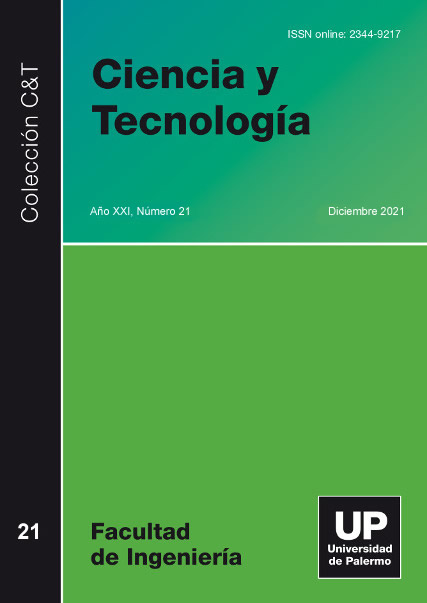Exploring parallel formal verification of BIG-DATA systems
Abstract
Software Engineering is trying to adapt its tools, mechanisms and techniques to cope with the challenges involved when developing BIG DATA software systems. In particular, formal verification in one of the areas that more urgently is required to step in. In this work we introduce two crucial aspects to consolidate the FVS tool to tackle this issue. For one side, FVS’s parallel algorithm is proved to be sound and correct. For the other side, we developed a compelling empirical validation of our approach, employing a communication protocol relevant in the industrial world within a context of parallel systems, introducing a load-balancer process and comparing several implementations.
Downloads
References
Asteasuain, F., & Braberman, V. (2017). Declaratively building behavior by means of scenario clauses. Requirements Engineering, 22(2), 239-274.
Asteasuain, F., & Rodriguez Caldeira L (2020). A Parallel Tableau Algorithm for BIG DATA Verification. CACIC 2020.
Bellettini, C., Camilli, M., Capra, L., & Monga, M. (2016). Distributed CTL model checking using MapReduce: theory and practice. Concurrency and Computation: Practice and Experience, 28(11), 3025-3041.
Boukala, M. C., & Petrucci, L. (2012). Distributed model-checking and counterexample search for CTL logic. International Journal of Critical Computer-Based Systems 3, 3(1-2), 44-59.
Brassesco,M.V. 2017. Síntesis concurrente de controladores para juegos definidos con objetivos de generalized reactivity(1). Tesis de Licenciatura., http://dc.sigedep.exactas.uba.ar/media/academic/grade/thesis/tesis_18.pdf UBAFCEyN Dpto Computacion
Brim, L., Yorav, K., & Žídková, J. (2005). Assumption-based distribution of CTL model checking. International Journal on Software Tools for Technology Transfer, 7(1), 61-73.
Camilli, M. (2014, May). Formal verification problems in a big data world: towards a mighty synergy. In Companion Proceedings of the 36th International Conference on Software Engineering (pp. 638-641).
Clarke, E. M., Klieber, W., Nováček, M., & Zuliani, P. (2011, September). Model checking and the state explosion problem. In LASER Summer School on Software Engineering (pp. 1-30). Springer, Berlin, Heidelberg.
Ding, J., Zhang, D., & Hu, X. H. (2016, June). A framework for ensuring the quality of a big data service. In 2016 IEEE International Conference on Services Computing (SCC) (pp. 82-89). IEEE.
Hummel, O., Eichelberger, H., Giloj, A., Werle, D., & Schmid, K. (2018, August). A collection of software engineering challenges for big data system development. In 2018 44th Euromicro Conference on Software Engineering and Advanced Applications (SEAA) (pp. 362-369). IEEE.
Kumar, V. D., & Alencar, P. (2016, December). Software engineering for big data projects: Domains, methodologies and gaps. In 2016 IEEE International Conference on Big Data (Big Data) (pp. 2886-2895). IEEE.
Laigner, R., Kalinowski, M., Lifschitz, S., Monteiro, R. S., & de Oliveira, D. (2018, August). A systematic mapping of software engineering approaches to develop big data systems. In 2018 44th Euromicro Conference on Software Engineering and Advanced Applications (SEAA) (pp. 446-453). IEEE.
Otero, C. E., & Peter, A. (2014). Research directions for engineering big data analytics software. IEEE Intelligent Systems, 30(1), 13-19.
Segura, S., Fraser, G., Sanchez, A. B., & Ruiz-Cortés, A. (2016). A survey on metamorphic testing. IEEE Transactions on software engineering, 42(9), 805-824.
Shafi, A., Carpenter, B., & Baker, M. (2009). Nested parallelism for multi-core HPC systems using Java. Journal of Parallel and Distributed Computing, 69(6), 532-545.
Vardi, M. Y. (2001, April). Branching vs. linear time: Final showdown. In International conference on tools and algorithms for the construction and analysis of systems (pp. 1-22). Springer, Berlin, Heidelberg.
Vega-Gisbert, O., Roman, J. E., & Squyres, J. M. (2016). Design and implementation of Java bindings in Open MPI. Parallel Computing, 59, 1-20.
The articles published in the journal Ciencia y Tecnología are the exclusive property of their authors. Their opinions and content belong to their authors, and the Universidad de Palermo declines all responsibility for the rights that may arise from reading and/or interpreting the content of the published articles.
The reproduction, use or exploitation by any third party of the published articles is not authorized. Its use is only authorized for exclusively academic and/or research purposes.









